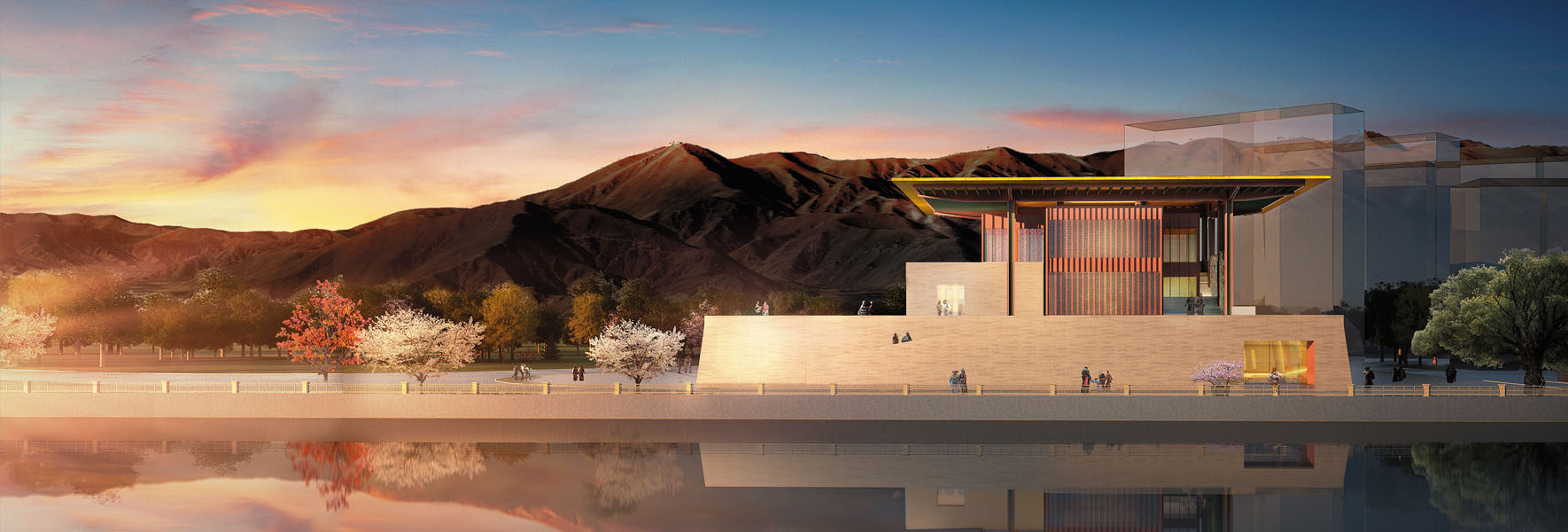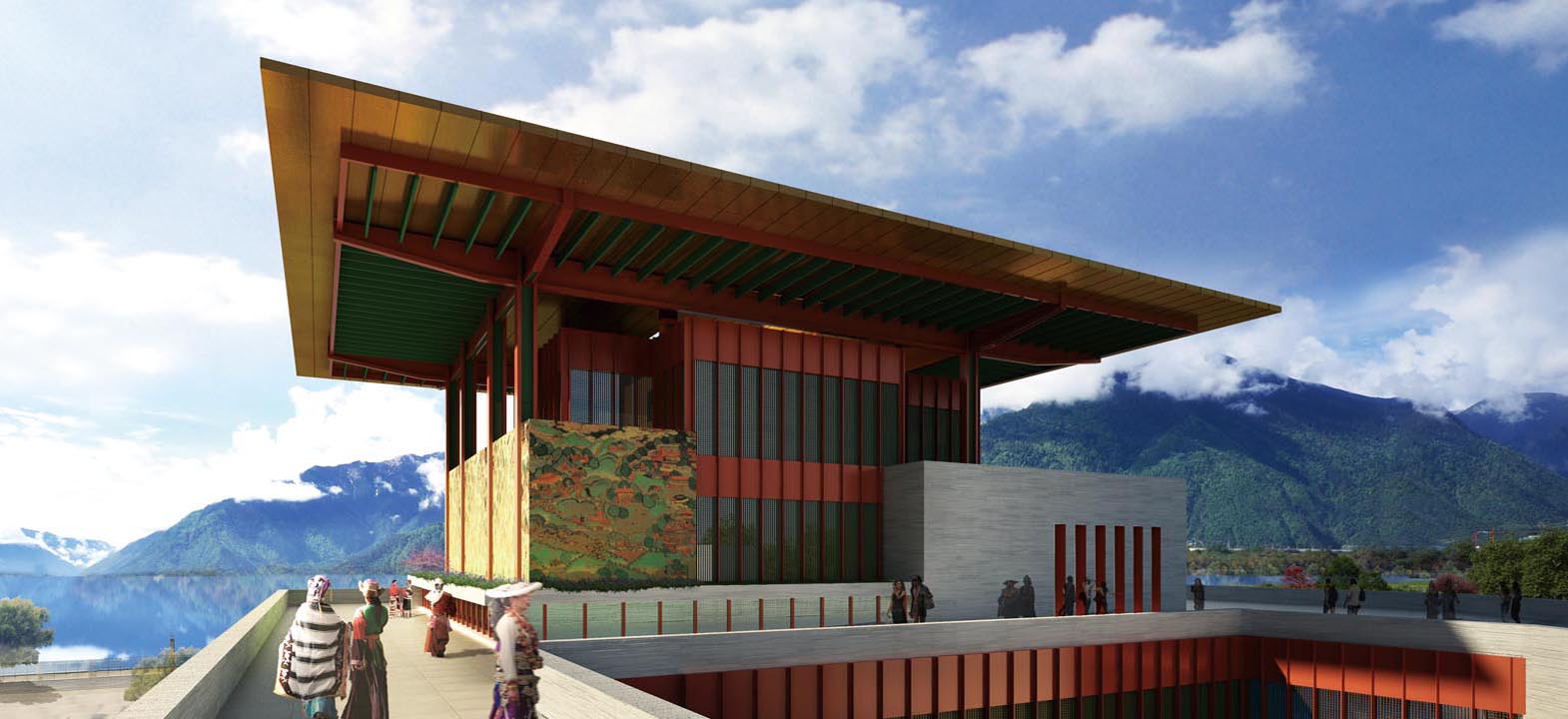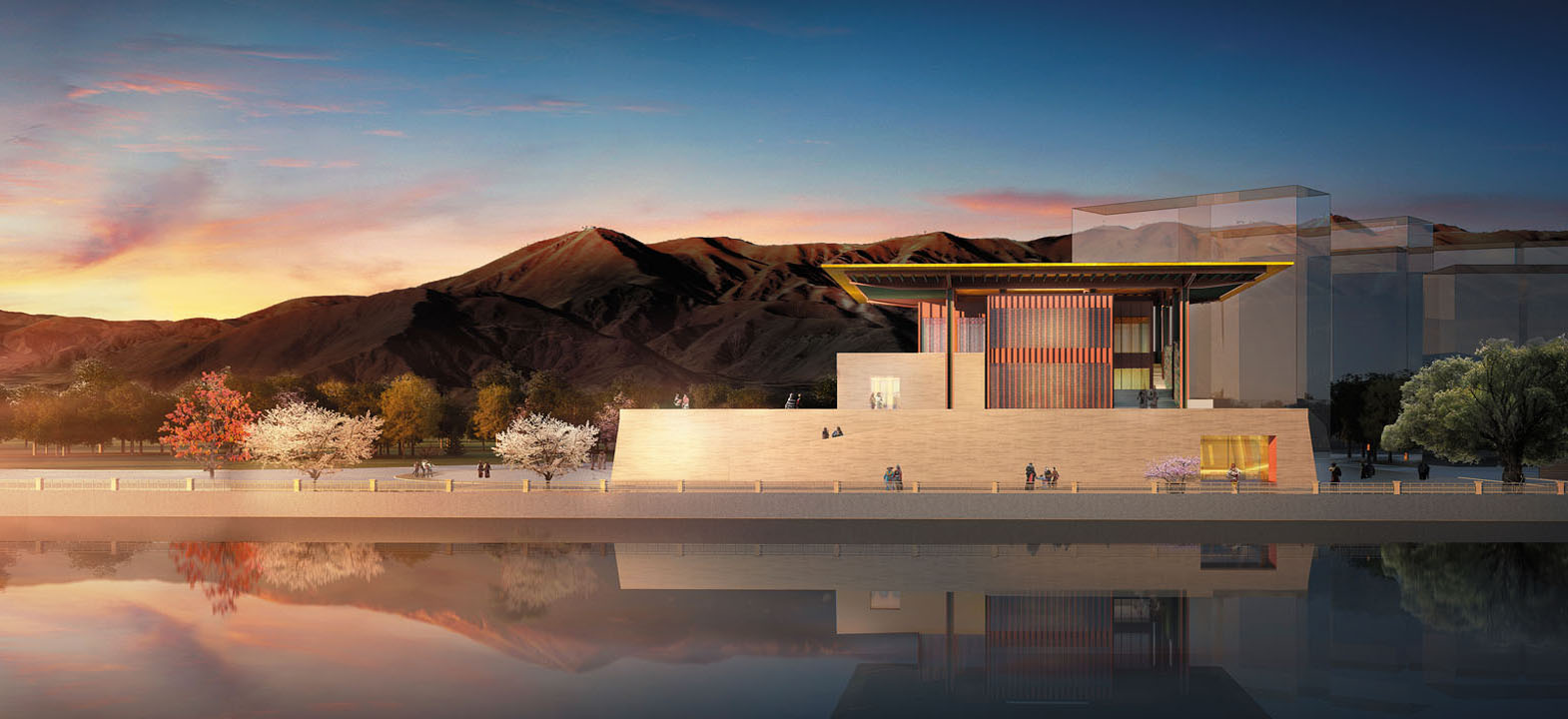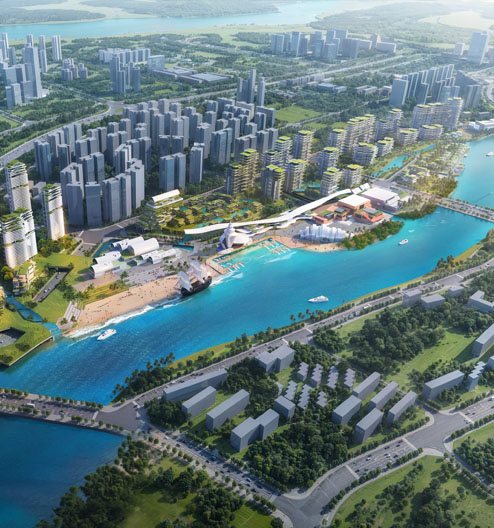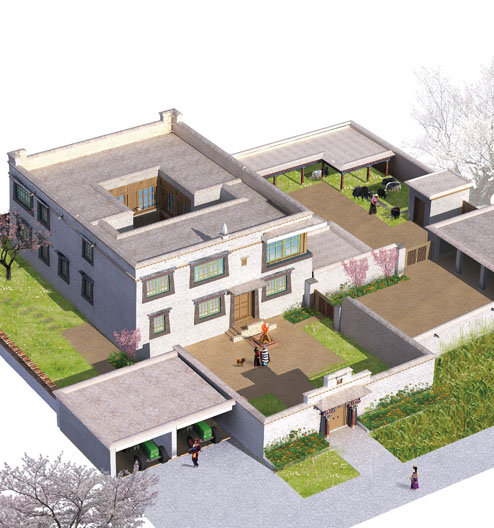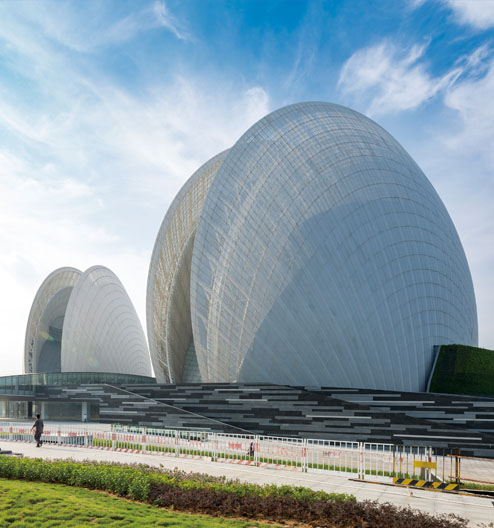Tibet Nyingchi Planning Exhibition Hall
Nyingchi, knowing in the past as Gongbu, is located in the southeast of Tibet. Its west and southwest are connected with Lhasa city and Shannan city respectively. It has the deepest canyon in the world - the Yarlung Zangbo River Grand Canyon, and the third deepest canyon in the world - the Palong Zangbo Grand Canyon. Nyingchi is known as “south of the Yangtze River in Tibet” for its beautiful scenery. Compared with other areas in Tibet, Nyingchi has its own unique cultural advantages. As the capital of Gongbu Tibetan culture, it has unique traditional architectural characteristics.
Nyingchi Academy of Calligraphy and Painting is located at the bridgehead of Erqiao, Bayi New District, Nyingchi city. It is adjacent to Niyang River. With the development of the economy and the prosperity of tourism, the construction of the city has not been able to meet the current needs of Bayi District, and the requirements of cultural-fit have been recognized gradually. In this context, the construction of the Nyingchi Academy of Calligraphy and Painting is required to play at least two roles: reconstructing the humanistic value of the Nyingchi area; secondly, acting as the living room of Nyingchi City and providing public space. The first floor of this building is designed along the plot boundary, which well responds to the relationship between site and building, activates the vitality, and provides citizens with multiple spatial experiences through the platform, inner courtyard, steps, roof, and other architectural elements. The shaping of public space makes Nyingchi Academy of Calligraphy and Painting become a real open city living room.
In 2014, Prof. Chen Keshi was commissioned by Fujian Provincial aid team to design the Nyingchi Academy of Calligraphy and Painting. The architectural design of Nyingchi Academy of Calligraphy and Painting is very difficult. First of all, it is located in the north of the Niyang River and near the Bridge of Nyingchi Niyang River. It is a design theme that is not easy to be brilliant. Moreover, for various reasons, 19 schemes that have been done before have not been accepted. One reason is for sure, that is, none of these schemes had met the requirements of decision-makers – a design scheme with regional, original and artistic features. Therefore, Prof. Chen Keshi and his design team first considered how to express the regionality of Nyingchi Academy of Calligraphy and Painting, including how to express the architectural characteristics of Gongbu Tibetan.
To understand the Tibetan architecture of Gongbu, we need to go back to the international tourism town of Lulang designed before and the research on the Tibetan architecture of Gongbu in Nyingchi during this period. The most important feature of the traditional Tibetan architecture of Gongbu that Prof. Chen Keshi understood was the roof. Among numerous regional architectures in Tibet, the biggest characteristic of the Nyingchi Gongbu architecture lies in its wooden structure and elegant roof. In Zhaxigang village of Lulang, we can see that the traditional Tibetan houses of Gongbu in the Yuan Dynasty had very distinct regional characteristics in the roof processing, which was manifested in the gentle double slope roof and the roof overhead processing. Then there is the very solid sloped wall, which is made of rammed earth. The sloped wall is a kind of echo to mountain building. These two features are very important, one is the overhead and elegant slope roof, the other is the solid sloped wall.
In the design of the Nyingchi Academy of Calligraphy and Painting, we first grasped these two obvious regional architectural features. First, the floating roof can see the processing under the eaves, that is, the overhead part under the roof, which has a warm color. In addition, the sloped wall is a common processing method in Tibetan buildings. For example, the white Tibetan houses in Ganzi and the traditional houses in Lhasa all have this processing method. The overall architectural structure design reflects the solid and stable characteristics of traditional Tibetan architecture. The building adopts the sloped wall, which is wide at the bottom and narrow at the top. The gradient of Tibetan architecture is different. The gradient is related to the building type and the volume of the building, which is determined by force. The sloped method of the calligraphy and painting academy is more just a response to the built form, considering the use of the function rather than the impact of the wall slope, as a result, the angle is set at 3%; the building takes the geometric cube as the prototype and forms the shape through stacking, inlaying, hollowing, and other design methods, and finally generates the architectural art with rich body shape changes and space transition.
